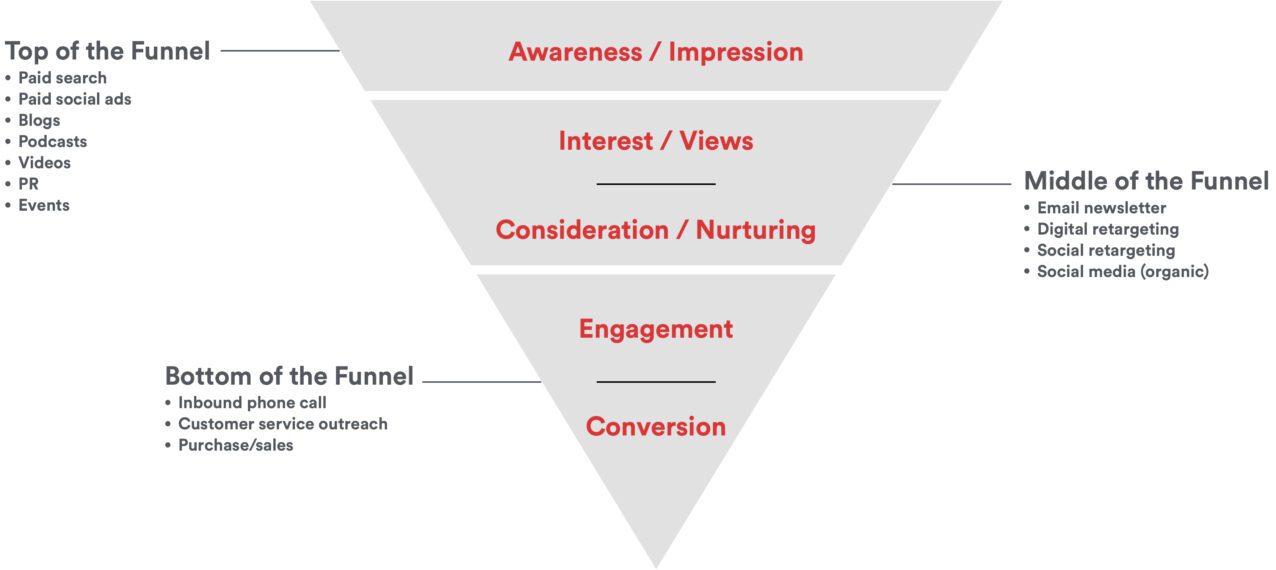
Marketing is constantly evolving. New things come and go but occasionally something comes along that causes a massive shift in the marketing landscape. Artificial Intelligence (AI) is one such phenomenon.
Experts predict that AI will create up to $2.6 trillion in business value in sales and marketing alone. It is already transforming every industry and will impact marketing in significant ways.
Here are four key trends we have our eyes on for 2024.
Zero- and first-party data will reign supreme
Marketers use data to understand their audience, tailor messaging and optimize campaigns. For years marketers have been collecting third-party data through web browsers to learn about website visitors’ overall online behaviors. But that’s about to change. In the second half of 2024, Google Chrome will completely block third-party cookies to protect consumer privacy and prevent fraud. This cookie-less future means marketers need to rethink digital advertising and start to rely on zero- and first-party data.
Zero-party data is voluntarily shared directly with marketers by customers through things like quizzes, polls and website activity. For example, we recently partnered with client Rural Mutual to create an Own Winter Quiz Sweepstakes where customers tested their winter preparedness knowledge through a quiz on the Rural Mutual website. When they took the quiz, customers shared data about themselves for a chance to win an Amazon gift card. Another example would be if a customer decides to submit a form through your website. First-party data is collected on the back end as customers and site visitors interact with marketing content by clicking links in a targeted email or clicking a product on your website. Both types of data offer accuracy, reliability and compliance when it comes to privacy.
In the new year, marketers will need to work even harder to build relationships with customers and provide compelling value propositions that encourage customers to share their information and preferences. AI algorithms will increasingly be used to analyze this data to find trends, make predictions and generate recommendations, leading to greater personalization in marketing overall. Zero-party and first-party data will only help make targeting consumers even easier in the new year.
ChatGPT can help develop content but beware of hallucinations
Artificial Intelligence will play a major role regarding public relations in several ways. AI analytics will provide more in-depth insights into audience behavior and preferences that will enable PR pros to better customize campaigns with laser precision. That will ensure messages resonate with the right people at the right time. Generative AI is a resource that PR pros can use to reduce content creation time, but there will always be the need for original thinking. The key will be to leverage it for efficiency but not use it as a crutch and create poor-quality content. CNET tried writing articles using AI in January 2023 and received reader backlash as a result of finding more than half of the AI-written stories had factual errors. They issued corrections on 41 out of 77 stories that were AI-generated.
ChatGPT and other AI content generators are known to “hallucinate” or output incorrect or false information, so anyone using these programs to develop content will need to thoroughly double-check that their content is factually accurate.
AI text analytics can streamline market research
Market research is often time-consuming, especially when it includes interviews, focus groups and in-person observations. Very often the data is qualitative, and finding valuable insights can be like searching for a needle in a haystack. New AI programs that can analyze text streamline the process of pinpointing trends and analyzing the meaning and sentiment of open-ended text.
“There’s a lot of uncertainty about Artificial Intelligence and its applications. But for marketing research, the upside is tremendous,” said Brian Arnold of Clearpoint Research Group. He points to programs like Canvs that help extract actionable and impactful insights from customer reviews and surveys through AI-powered text analysis that assesses open-ended text.
National Geographic, a 135-year-old brand, recently used Canvs to learn about its customer base. The program sifted through 20,000 open-ended comments in a customer survey to understand why customers were not renewing subscriptions. It found insights that allowed National Geographic to improve content and headlines. With programs like this AI makes the work easier, but it will still need to be managed and monitored by a human. Still, it significantly decreases the load to be lifted.
Web design prioritizes motion powered by AI
A key website trend for 2024 is motion, from scrolling effects to micro-animation. AI can process and animate large data sets allowing designers to make more personalized and engaging motion graphics.
Scrolling effects — animations triggered by scroll action — create more dynamic web experiences, which is why they’re arguably one of the most popular trends this year. These are increasingly used on interactive websites to encourage readers to keep scrolling, signify a break in content and create a three-dimensional experience. A favorite example is Factory International, which uses subtle transitions to denote different page sections and keep users engaged.
Kinetic typography is an animation technique first seen when feature films began using animated opening titles. Saul Bass’s striking work on Hitchcock’s North by Northwest is often credited as being one of the first. It can be used for a similar purpose in website design to immediately grab the visitor’s attention once they land on the homepage. It can also be used to highlight important sections, guide the user as they scroll and gradually reveal information, like on Arcadia. AI highly influences these designs, with algorithms that create fluid, complex animations that respond to user interactions in real time.
If you would like to muse further about any of these trends or want to up your marketing game in 2024, reach out to STIR President Brian Bennett at brianb@stirstuff.com.





